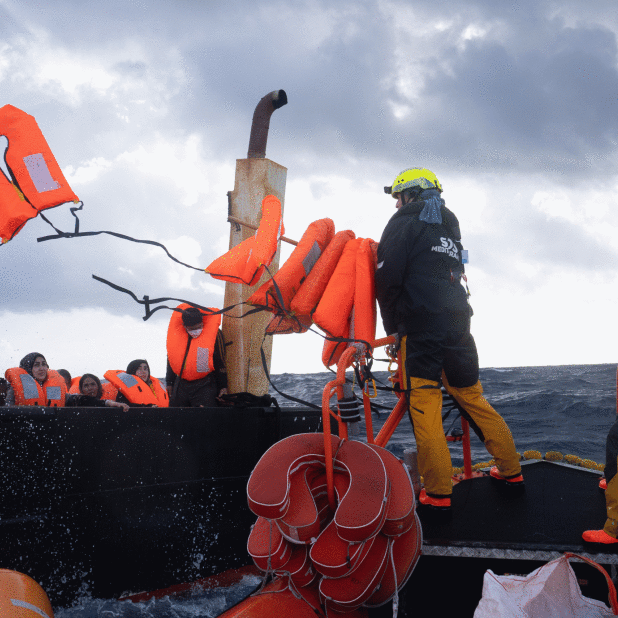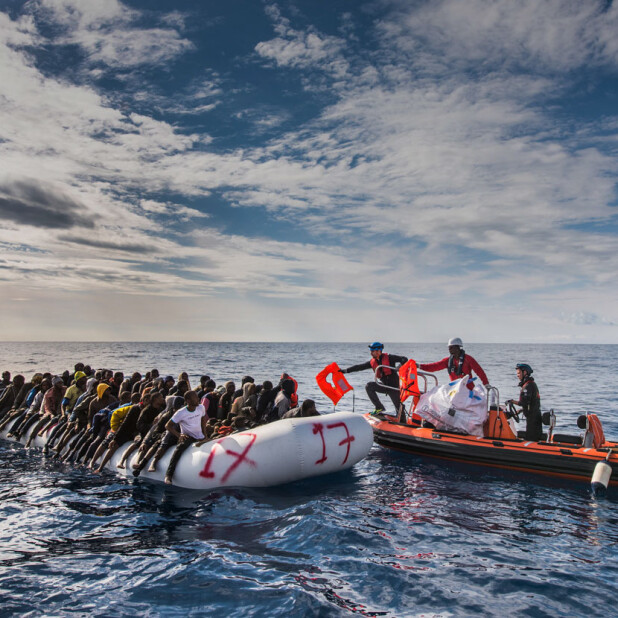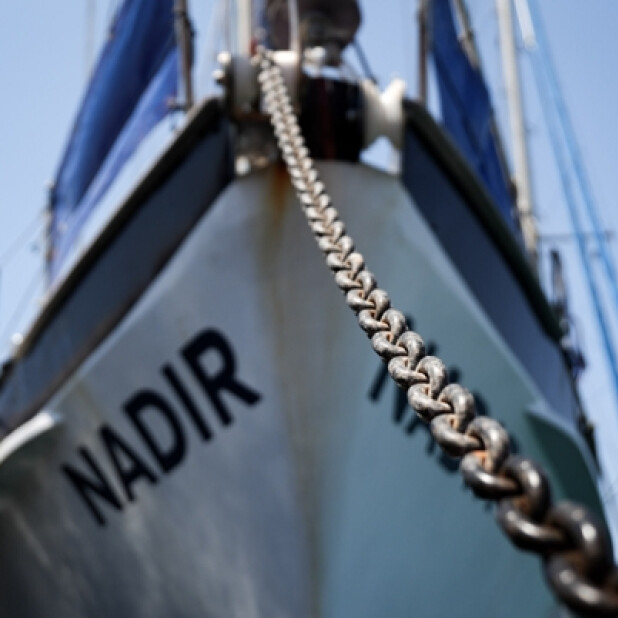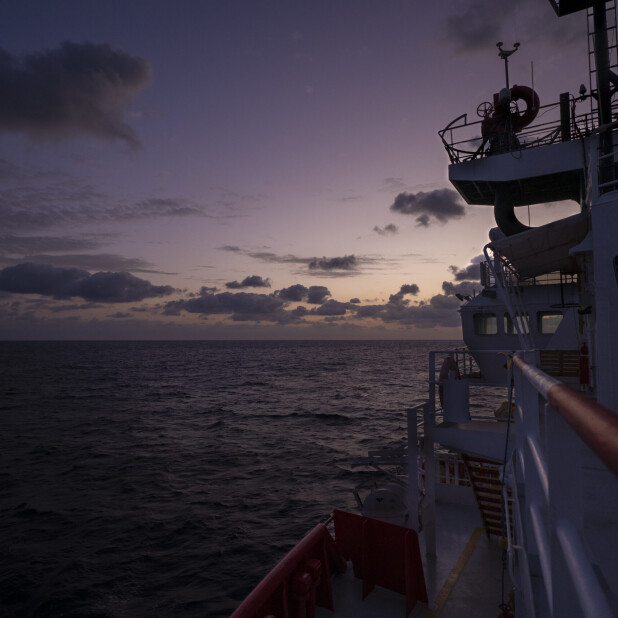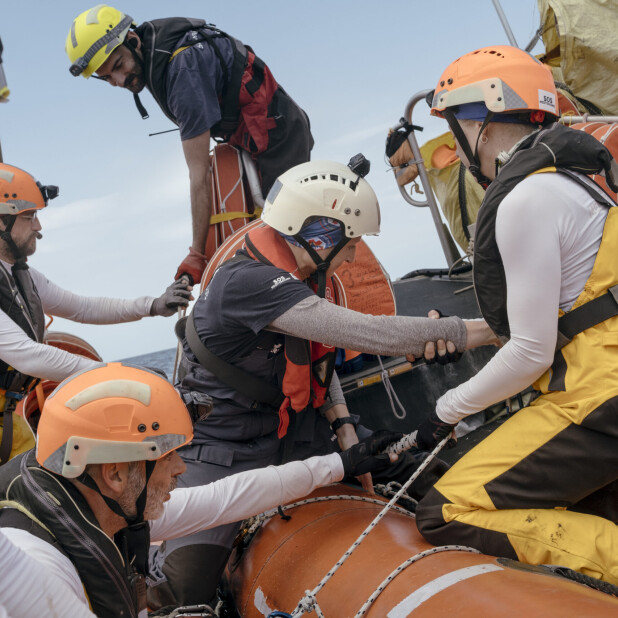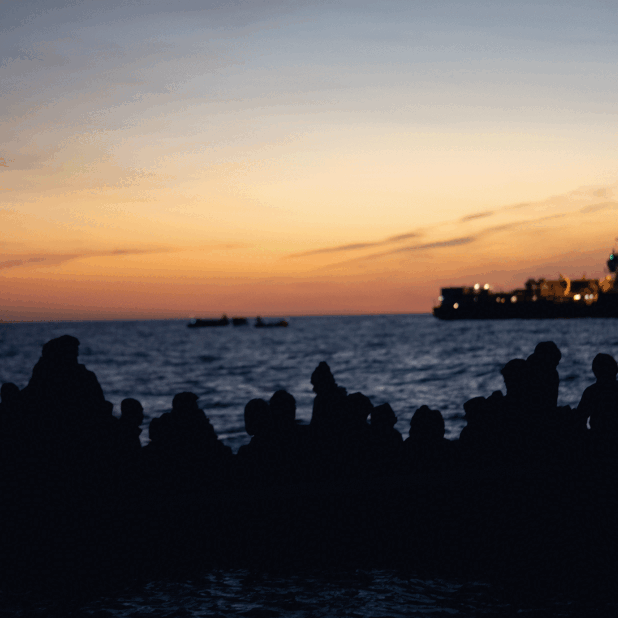
On two occasions since November 2023, a single person refused to be evacuated from a boat in distress at the end of a rescue operation carried out by SOS MEDITERRANEE and instead left the area once all other persons were on board our fast rescue boats. These cases all occurred in the same stretch of sea, in International waters in the Libyan Search and Rescue Region.
On November 2023, after evacuating 33 people from an unseaworthy, overcrowded boat in distress, the last remaining person onboard the makeshift boat suddenly started the engine and left the scene. This was the first time our team experienced such situation, amidst over 350 rescue operations conducted by SOS MEDITERRANEE teams. Approximately a month later, mid-December, our team onboard Ocean Viking faced a similar situation. The man who wished to remain onboard reported to our team on the rescue boat and an independent journalist that he had to return to Libya because his wife was held captive there. We have immediately shared information on these incidents with the relevant authorities. SOS MEDITERRANEE intervenes in the International waters of the central Mediterranean to rescue people in distress in compliance with international maritime conventions. Maritime laws lay down specific obligations that cannot be breached without committing an illegal act.
Why are Search and Rescue maritime assets vital in the central Mediterranean?
In 2023, according to the International Organisation for Migration (IOM), at least 2,498 women, children and men died and went missing in the central Mediterranean, and these are only the known deaths. It is the highest number of deaths recorded since 2017. Most of these deaths and disappearances occurred in the Libyan Search and Rescue Region, where coordination of SAR efforts is almost non-existent, and where the Libyan Coastguard routinely engages in dangerous and unlawful behaviour.
The tragic shipwreck of December 16th that claimed the lives of at least 61 persons is a sad example of the deadly lack of SAR capacity in that area. The shipwreck took place, as countless others that we know of and probably many more that went undocumented, in the same stretch of sea.;
Furthermore, the team onboard the Ocean Viking has witnessed and heard reports from survivors of dangerous and unlawful interceptions and forced returns by the Libyan Coastguard in this region in International waters off Libya. On several occasions, the aggressive behaviour of crews on Libyan Coastguard patrol boats put the lives of shipwrecked persons at risk. According to EU and UN institutions, Libya does not qualify as a place of safety. Disembarking persons rescued from distress at sea in Libya therefore constitutes a breach of maritime law. There have been countless reports by survivors both on the Ocean Viking and to UN institutions of arbitrary detention and a cycle of exploitation, extortion and violence after interceptions and forced returns by the Libyan Coastguard.
What distress criteria trigger the obligation to rescue?
Maritime Law, more specifically the United Nations Convention on the Law of the Sea (UNCLOS) stipulates that any ship that is able to provide assistance to persons in distress at sea must do so. The people on the boats that one individual refused to be evacuated from were objectively in distress. Refusing to assist the persons in distress on these boats would therefore constitute a breach of international law.
The criteria that constitute distress at sea are clearly defined in international and EU regulations, such as Regulation (EU) No 656/2014. There are several elements to take into consideration to assess whether a boat is in distress:
the existence of a request for assistance, although such a request shall not be the sole factor for determining the existence of a distress situation;
the seaworthiness of the vessel and the likelihood that the vessel will not reach its final destination;
the number of persons on board in relation to the type and condition of the vessel;
the availability of necessary supplies such as fuel, water and food to reach a shore;
the presence of qualified crew and command of the vessel;
the availability and capability of safety, navigation and communication equipment;
the presence of persons on board in urgent need of medical assistance;
the presence of deceased persons on board;
the presence of pregnant women or of children on board;
the weather and sea conditions, including weather and marine forecasts.
All the boats rescued by SOS MEDITERRANEE meet not only one but several of these factors. The two boats rescued in December and November 2023 mentioned above were unfit for high seas and overcrowded, none of the shipwrecked persons had maritime certifications, the boat didn’t have essential safety equipment and lifejackets, all shipwrecked persons were exposed to the elements and on some occasions, the weather was rough.
Why is the Ocean Viking obligated to be traceable?
SOS MEDITERRANEE has never been in touch with persons in Libya intending to cross the Mediterranean and we do not publicly communicate the location or itinerary of the Ocean Viking. However, maritime safety regulations oblige all ships above a certain tonnage to be equipped with automated identification system (AIS) transceivers that transmit navigational data to AIS receivers. As such, all ships can be tracked on vessel traffic services, electronic charts and publicly accessible vessel tracking websites. The position of the Ocean Viking thus is, and must be, publicly accessible at all times to anyone with internet access. Turning the AIS transceiver off to hide the ship’s position and track is not legal and is therefore not an option.
We will continue to rescue people in distress at sea.
Investigations at sea fall under the responsibility of State authorities. We will continue to monitor the context closely and to communicate transparently with authorities, as we have always done.
People fleeing Libya don’t have any other choice but to risk their lives at sea to escape from the violence and human rights abuse in the country. An increase of interceptions and forced returns and the absence of safe and legal alternatives to seek safety leads to an adaptation of routes and techniques. The more difficult it becomes for people to flee the horrific abuse in Libya that survivors have reported to our teams onboard for years, the more they are forced to rely on smugglers and traffickers. As long as people are forced to cross the sea in search of safety and with no State-led initiative to stop the rising death toll in the Mediterranean, we will continue to carry out our lifesaving mission at sea to uphold maritime law and the duty to rescue.
Cover picture: Tess Barthes / SOS MEDITERRANEE

